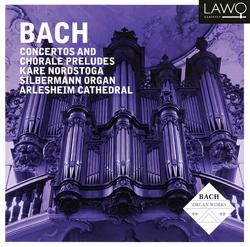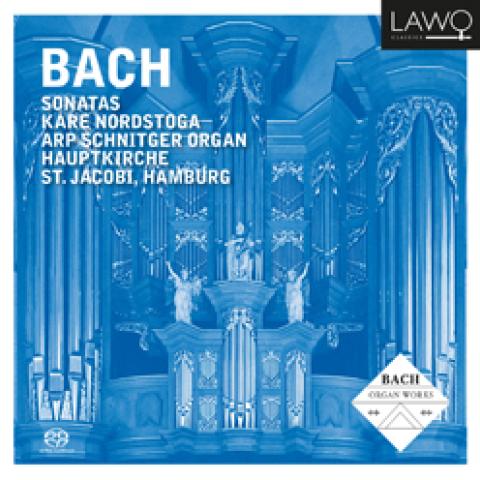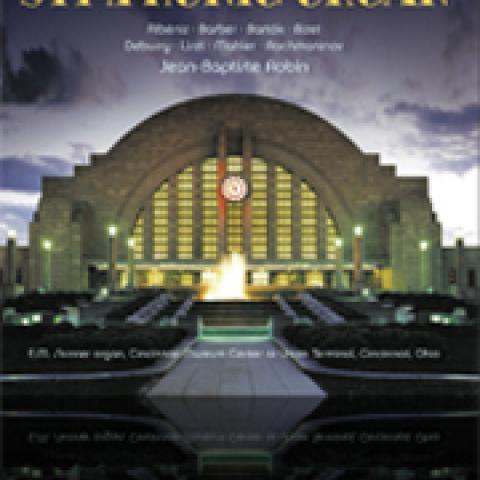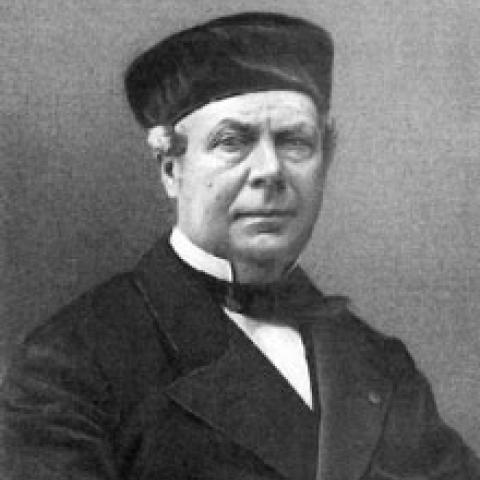The 46th University of Michigan Conference on Organ Music took place October 1–4, 2006. The event focused on music of Germany, France and the USA, featuring performances by Marie-Claire Alain, Michigan faculty members Marilyn Mason, James Kibbie, and Michele Johns, and a slate of lectures on a variety of topics. The majority of events took place at Hill Auditorium, home of the 4-manual, 124-rank Frieze Memorial Organ.
Children’s choir festival
The conference opened with a children’s choir festival organized by the Ann Arbor Chapter of the American Guild of Organists. Thomas Strode, AGO board member and director of the Ann Arbor Boy Choir, gathered over 85 children from six area churches and schools to sing together. Approximately half the program featured music sung by the combined choir directed by Strode; several groups sang individually as well, including the Messias Temple Youth Choir, whose inspired performance brought the audience to its feet. Charles Kennedy skillfully accompanied the choir, and played three Sketches and a Canon by Schumann. The audience of several hundred comprised largely families with young children, and I was glad to see them exposed to the sounds of both well-trained children’s voices and the pipe organ. Given the disposition of the audience, the stage was perfectly set to engage the multi-generational crowd with organ repertoire or a demonstration designed for such a purpose. Tom Strode did give some impromptu remarks about the organ, which seemed to pique the interest of the adults seated near me, but the program would have had greater impact had it included one of the many light-hearted, educational organ demonstration pieces of recent vintage. Based on the interest of more choirs in participating, the Ann Arbor AGO plans to continue this event in the future. I encourage them to make the most of the opportunity to educate young people about the pipe organ.
Michigan faculty performances
Sunday evening, Marilyn Mason and flautist Donald Fishel gave the Ann Arbor premiere of Breath of the Spirit—Pentecost for flute, organ, and narrators, composed by Michigan graduate Gregory Hamilton, based on poetry by Kenneth Gaertner. The pattern of the work was inspired by Dupré’s La Chemin de la Croix, with the ten sections of the work musically interpreting and commenting upon the poetry. In her opening remarks, Marilyn Mason noted that this concert was one of the first events to take place following the official renaming of the music school. In collegial spirit, she appropriately included two members of the theatre department as narrators in this performance presented by the School of Music, Theatre and Dance.
Here is a brief synopsis of the work, with a few noteworthy quotes from the poetry:
1. Overture—organ alone, featuring big solo trumpet melody.
2. Annunciation—the organ and flute trade motifs, suggesting a dialogue between Mary and the Angel Gabriel, the rounded sounds of the Hill organ blending beautifully with the flute.
3. Children in Praise—children caught up in the excitement and wonder of the quiet Rabbi Jesus healing a crippled man and a man with a withered hand. The flute introduces a sprightly theme, which is echoed by the organ, spiced with mild dissonance.
4. Herod—the poem speculates on Herod’s thoughts about John contrasted with those about his lover Herodias. He is simultaneously upset and intrigued by John, comforted and attracted to Herodias. Unaccompanied flute plays long passages in the low register contrasted with passages in the instrument’s uppermost register.
5. Mary Dancing—the story of Jesus changing water into wine at the wedding in Cana and the dancing at the wedding. For solo flute, nearly moto perpetuo.
6. Judas—for organ solo, beginning with a crashing chord and descending pedal solos, then a decrescendo to a sighing Bach-like fugue section. The movement ends with more clashing dissonance alternating with a funereal fugue. “Mankind’s future is mankind’s sin.”
7. Mary Magdalene/Doubting Thomas—the extended poem is followed by long flowing melodies portraying gentle happiness.
8. Poverty Shared—illustrates the experience of a poor man listening to Jesus preach. It begins seething with tension, then eases and flows into comforting, surging waves of lovely harmonies. The poetry preceding the movement offers these paradoxical thoughts: “Listening to the Rabbi preach, shedding the shroud of poverty, words flew into the ears of his poverty’s corpse. Had not his curse always been his salvation?” The initial tension returns to close the movement.
9. Desert Grief—Jesus appearing to Mary, resurrected. An oboe solo on organ alternates with the flute melody, perhaps indicating an undulating, leaping soul—“the burned sins of the world fell in gray ashes.”
10. Pentecost—recaps the overture, framing the work. Several strong poetic phrases wrap up the ideas in earlier poems: “delusions were ashes,” “truth cut through the oppression of their past,” “died and could not die again.”
Mason and Fishel proved themselves well-synchronized partners performing Breath of the Spirit, deftly navigating the work’s changing rhythmic landscape. For an extended work, it is easy to grasp and enjoyable on first hearing. Its accessible, attractive music would no doubt be enhanced by a church setting to give it a sacred context. The work will be published in the near future, perhaps with some of the movements simplified to promote more performance, especially in a liturgical setting.
James Kibbie: Leipzig Chorales
James Kibbie played all of Bach’s Leipzig Chorales in two sessions, the first on the Fisk organ at Blanche Anderson Moore Hall at the School of Music, and the second on the Wilhelm organ at First Congregational Church of Ann Arbor. Kibbie takes a natural approach to these chorales—his playing is unfussy and elegant. He works with the organ’s natural articulation, adding his own subtle touches, all in keeping with the musical flow and not distracting from the overall effect. His pacing of the chorales is cohesive and appropriate, each tempo and transition carefully considered, and the registrations are apt, tastefully chosen for color and not solely dramatic effect.
The audience sang each chorale tune before Kibbie played Bach’s settings, having been provided with a booklet including the chorales. The booklet also contained comprehensive notes written by Larry Visser in 1992 when he performed the Leipzig Chorales as part of his doctoral studies at Michigan.
James Kibbie is on sabbatical leave during winter term to begin a three-year project to record the complete organ works of J. S. Bach on historic organs in Germany. During 2007, he will record approximately one third of the Bach organ works, including the Leipzig Chorales on the Silbermann organ of Dresden Cathedral and the Kirnberger Chorales on the Silbermann organs in Rötha.
Michele Johns and Kristen Johns
Michele Johns and her daughter Kristen performed a delightful concert of music for horn and organ on Monday afternoon. Kristen Johns has recently earned a DMA in horn performance, and has compiled a list of over 100 pieces originally composed for horn and organ as part of her research. The program included a selection of works composed in the last third of the 20th-century, opening with the fanfare-filled Celebration for Horn and Organ by Randall Faust. Next, Craig Phillips’ tuneful Serenade for Horn and Organ was filled with the composer’s signature harmonies, while Dutch composer Jan Koetsier’s Choral-Fantasie on Gib dich zufrieden un sei stille reminds one of Mendelssohn or Rheinberger. Daniel Pinkham’s The Salutation of Gabriel was commissioned by Joan Lippincott in honor of Karen McFarlane’s retirement. It is a programmatic work in three continuous sections—Gabriel delivers the message, Mary replies, Gabriel departs. Pinkham effectively portrays both the excitement and weightiness of the message, going so far as to instruct the performer to walk off-stage before playing the closing notes of the piece to signify Gabriel departing. Arnatt’s Variations on Divinum Mysterium is a beautifully composed work, keeping the familiar chant tune prominent most of the time. Works by Paul Basler and Gunther Marks rounded out this enjoyable mother/daughter collaboration.
Student performances
Students of Marilyn Mason and James Kibbie performed in several concerts during the conference. Monday morning, doctoral candidate Seth Nelson gave an excellent lecture-recital on Mozart’s flute clock pieces. The temperament of the Fisk organ brought out the character and color of these pieces, particularly the F-minor Fantasy. Doctoral students Marcia Heirman, Andrew Meagher, Alan Knight, Christine Chun, Susan De Kam, and master’s student Thomas Kean performed works ranging from Messiaen to Brahms to Vierne on Monday afternoon. Undergraduate Joseph Balistreri, master’s student Paul Haebig, doctoral student Michael Stefanek, and returning DMA graduates Shin-Ae Chun and Seth Nelson played works by Le Bègue, Langlais, Franck, Sowerby, Bolcom, and Dupré on Wednesday afternoon. Following the organ program, Christine Chun performed her first dissertation recital as pianist of the Michigan Trio, performing chamber works with cellist Amar Basu and violinist Jane Yu. David Saunders gave his second doctoral recital on Wednesday evening, playing music of DeGrigny, Guilain, Franck and Grandjany. Carillonneur Steven Ball gave a short carillon concert prior to the evening event.
Mozart lecture
Music theory professor Ellwood Derr gave an outstanding lecture on Mozart on Tuesday morning. He began by offering a Native American saying, “It is good for the living to perform ceremonies for the dead,” and invited his audience to actively participate in the lecture. Comparing Mozart to Michelangelo and Shakespeare, Derr asserted that Mozart is a magician, a freak due to his unusually high level of skill and his ability to innately and directly communicate with his audience, whether or not they are educated. His corpus of works, which Derr believes to be technically perfect, is so vast it is nearly impossible to listen to it all.
Derr has done research that identifies more than 80 Mozart works that borrow material from J. C. Bach, whom Mozart greatly admired. He recognizes three ways in which existing material can be incorporated into new works: reuse of thematic material, a technique so widely used as to be in common domain; unadorned borrowing for effect; and material retrieved from memory, the most common method of borrowing. He discussed examples from the Great Mass in C minor and the Requiem. In connection with remarks on the high quality of Mozart’s unfinished works, he played a selection from a recent recording of a gorgeous unfinished aria from Davide Penitente. Following the conference, Derr was slated to give this lecture and two additional lectures as part of a series of events celebrating Mozart, his era and his influence.
Classical French music
Monday afternoon, Susanne Diederich and Jean Randall offered a session on the Classical French organ and its music. Using the Frieze organ in Hill Auditorium, Randall demonstrated at the console and Diederich spoke. The main points of the lecture were the importance of stylistic specialties in giving character to French classic music, and that this period represents a rare confluence of instrument, music, style, and performance practice all working together. This era is unique in history; organ builders and organists worked closely together, and the organ was participating in the general development of music. Following this lecture, Stephanie Nofar gave a lecture-recital, “The Other France: Tribute to Unknown Masters.”
Maurice Clerc recital
Maurice Clerc played a recital featuring several transcriptions at Hill Auditorium on Monday evening. Having played at several previous conferences, Clerc seemed at home at the console and utilized the organ’s resources to great effect, preferring full registrations such as he can create at his home church, Notre-Dame in Paris. He began the program with his own bombastic transcription from Verdi’s Don Carlos, and moved on to Franck’s Pièce Héroïque, playing it with a very legato touch. He captured the excitement of the piece effectively, adding an arpeggiated fanfare before the closing chords. His transcription of a suite of character pieces by Fauré provided enjoyable listening, enlivened by colorful registrations. He followed with the Suite Medievale by Langlais, and closed the program with his transcription of a scherzo improvised by Pierre Cochereau in 1974.
Clerc: The art of transcription
On Tuesday afternoon, Maurice Clerc gave a lecture on preparing transcriptions. He cited transcription practices in the 18th century—Bach’s Schübler Chorales, Rameau’s arrangements of his own operas, and Balbastre’s transcriptions of his own works. After being abandoned for a time, transcription again became popular in the latter half of the 19th-century. Liszt arranged favorite orchestral and choral works for organ, and is known to have played the Kyrie from Mozart’s Requiem and transcriptions of classics for Widor. Karg-Elert made arrangements of Wagner’s works, using every possible technique available on the organ. Organ performance was very popular at the time, giving people the opportunity to hear great orchestral works performed on the instrument, since they would have had little or no opportunity to hear the likes of Wagner otherwise. Many composers did not write for the organ at all, deterred by having secular works performed in a sacred space, since most organs are located in churches.
Transcriptions allow us to play works by composers who didn’t write for the organ. The body of organ repertoire can be increased, and allow us to study a composer’s techniques. In addition, Clerc believes organists make transcriptions for their own enjoyment, giving the examples of David Briggs and Daniel Roth, as well as Jean Guillou, who made transcriptions when it wasn’t considered a legitimate art. Clerc discussed two types of transcriptions: adaptations of existing works to the language of the organ, and notations of improvisations. Both Dupré’s and Tournemire’s improvisations have been notated, allowing us to observe their improvisation styles. Clerc has transcribed works of Pierre Coche-reau, whom he describes as “having sparkling musicality, and endowed with staggering speed and an innate ability to use the whole organ from soft to loud.” Transcribing these improvisations captures a moment in time and preserves the uniqueness of the improviser’s art.
Michael Barone
Michael Barone opened his session with this statement: “We think we know everything, but if we don’t know history, we’re destined to repeat it.” His goal was to give a survey of how performers have approached French music over the years. Tinkering patiently with recalcitrant hi-fi equipment, he began with the first recording of early French music, a disc recorded by André Marchal on a Gonzales/Beckerath at Attignon in 1936, wondering “Can we play this music any better today?” Barone created a pastiche of Franck’s Pièce Héroïque, alternating passages played in 1929 by Marcel Dupré and in 1962 by E. Power Biggs, and offered a composite of several recordings of Gigout playing his own B-minor Toccata. He offered 15 examples of the opening section of Franck’s B-minor Choral, noting the balance shift between the manuals and the pedal among the various recordings.
Barone’s open-minded approach allows his audiences to be exposed to many performers and performances that might be ruled out in narrower definitions of what is worthwhile. He chooses recordings of instruments or performances that he deems so beguiling or interesting that they deserve a hearing, and to his credit is not bound by fashionable definitions of authenticity or correctness. He encouraged the audience to spend time listening to how our predecessors performed, noting that any organist worth his or her salt “speaks French.” Known for closing his sessions with a memorable aural example, Barone did not disappoint. He closed with a recording of Messiaen’s La Nativité by a Russian accordion player.
Marie-Claire Alain
When Marie-Claire Alain stepped onto the platform to perform her concert Tuesday evening, she was greeted by an extended ovation from the capacity audience of conference attendees, church members, and locals. She had given a masterclass on the music of Jehan Alain that afternoon, and the evening’s event only seemed to bring forth more energy in her. She began with a set of guitar pieces by Campion transcribed for organ, which showed off the colors of the instrument, followed by two settings of Schmücke dich by Bach. She took the familiar BWV 654 at a lively pace, and deftly negotiated handfuls of notes in BWV 759. Closing a set of three Bach works, the C-major prelude and fugue, BWV 547, sparkled in her hands. This work too often suffers from plodding and heavy rendition, but Marie Claire moved it along under perfect control, clearly feeling very comfortable with the piece and the instrument.
The second half included Dupré’s Virgo Mater, op. 40, which is dedicated in memory of Jehan Alain, followed by three pieces by her father, Albert Alain. Though written in the 20th century, these pieces hark back to earlier styles, and are particularly akin to the works of Vierne and Widor. The contrast between Albert’s music and Jehan’s is interesting, the former steeped in French tradition, and the latter unbound by tradition. The younger Alain’s Deux Danses and Suite bring this point home. Marie-Claire had played well all evening, but her performance really caught fire performing her brother’s works. Following a long standing ovation and her 85-minute program, she tossed off a riveting performance of “Litanies” as an encore as if it was the first piece of the evening.
Brandon Spence: multi-cultural worship
Brandon Spence, a Michigan graduate, is director of music at St. Andrew’s Cathedral in Grand Rapids, Michigan. This parish is home to people who speak English, Spanish, and Polish, as well as some who neither speak English nor are able to read. Spence approaches his task by asking two questions: who is present in worship? What are your musical resources? How do we make the music relevant? He cleverly illustrated with the movie “Guess Who’s Coming to Dinner?” asserting that there is a parallel between preparing a meal according to the needs of diverse guests and preparing music for worship. For Spence, the main issues are inclusiveness, enculturation, and fidelity to tradition. Worship should be inclusive, inviting, and engaging. Worship works best when people can feel that they belong and feel invited. With the assistance of a cantor from St. Andrew’s, he demonstrated using settings of Psalm 34 in different styles ranging from the Basilican Psalter to jazz and gospel in order to reach the various sectors of his diverse congregation.
Conclusion
The varied events of the 46th annual organ conference once again combined to provide current students and attendees with an excellent opportunity to delve into the riches of pipe organ repertoire and performance. Many thanks to Marilyn Mason and her colleagues who organize this valuable conference each year.





